
‘I would like to make a case for the aesthetics present in Stephen Broomer’s appropriation films, but particularly in his latest film to date, Fat Chance (2020). One might be inclined to appreciate this work as a continuation of the possibilities for found footage in experimental cinema, following in the steps of other greats like Bill Morrison and Peter Tscherkassky (and yes, there is something to say -aesthetically and in its poetics*- about certain similarities between the film, and, let’s say, others like Outer Space or Light is Calling). But, if Morrison is preoccupied with the fleeting nature of celluloid and its role on the dramatic narrative tension of film, and Tcherkassky with the possibilities of the celluloid in terms of its possibilities to synthesize certain conventions of commercial cinema (a particular twist on structural filmmaking), Broomer’s aesthetic recalls a pictorial effort of synthesis akin to the efforts of the precursors of abstraction (let’s think Alexander Cozens’ inkblot landscapes) and the work of the German Expressionists, particularly the Die Brücke movement.
‘Moving forward with this idea, Broomer’s work and hybrid method of alchemy and digital manipulation of the image continues a tradition dating back to the 16th and 20th century. The inherent tension of comparing different media is apparent in this comparison, but I find that Broomer’s experimentation with the image, which has an element of chance (as any method that works violently with film chemistry), is precisely what it means to be; when the second stage of processing comes (a digital post-production phase), the author is more than precise in what the film’s aesthetic intentions are and will be. So it’s not far-fetched to grasp the elements of this carefully composed work to find parallels in other moments of art history, which give the author’s work a particular weight and presence, and underline its importance in the history of cinema.
‘Below is a composite made from Alexander Cozens’ Plate 4., one of his formal experiments with inkblot and landscape, and a still from ‘Broomer’s Fat Chance, depicting an interior in full abstraction. The immediate correlative codes of relation are not just incidental. When working with images of Film Noir aesthetics, Broomer’s methods of hybrid abstraction project an image which is deeply pictorial (an element shared by other master manipulators of the digital image, like Jacques Perconte), and suspends itself in an abstraction which appears to be a certain mode of “action painting” in the moving image. Fat Chance is composed of thick blobs, or thick brushes of black and white which decompose the image into the limits of the figurative and the abstraction. In the liminal spaces of this transition lies the history of Laird Cregar, a character we will return to shortly. But it’s difficult not to think of the efforts of early abstraction when watching the images of Broomer, and it particularly recalls (at least in my mind of an art historian in formation) the treatise of the possibilities of landscape drawing by Cozens, particularly A New Method of Assisting the Invention in Drawing Original Compositions of Landscape (1785-6). If Cozens was looking for a new way to compose the material landscape with his watercolor composites, with free, expressive brushes that achieve a particular materiality, Broomer is doing so as a way of unveiling a personal landscape, looking for the essence of expression through image manipulation.

‘This is how we land in the realm of Laird Cregar, the subject of Broomer’s film. If we’re talking about “personal landscape” we must understand that Broomer is working not much in the decomposition/transfiguration of cinema itself, but in finding, though carefully composed movements, elements in the life of Cregar that can be synthesized in the moving image form. Premiered in the latest International Rotterdam Film Festival, the programmer’s notes state: “Cregar died aged 31 from subjecting his rotund body to a crash diet that he believed would thin him down to romantic-lead size – at exactly the moment he was heading for a different kind of stardom thanks to a pair of very sinister noir milestones by John Brahm: The Lodger (1944) and Hangover Square (1945).”
‘Cregar was a man whose burden overwhelmed his will to live. His problems with weight and his homosexuality (which was promptly hidden through studio influence) plagued him with doubts about himself, leading to his early death. Broomer opens with an Oscar Wilde quote from The Ballad of Reading Gaol: I know not whether Laws be right/ Or whether Laws be wrong;/ All that we know who lie in jail/ Is that the wall is strong. Wilde, a man persecuted in his time, wrote the poem while serving two years in prison for “gross indecency”.
‘Cregar, incarcerated in the Hollywood system, was an icon crushed by the system that fed him. Broomer makes his precise movements clear when selecting the scenes where Cregar appears as a man who symbolically ends his life, the climax of Hangover Square serving as the perfect metaphor for Cregar’s life: a pianist obsessively continuing his piano concerto even as the theatre is engulfed by fire. This dual /over-imposed decomposed image works perfectly, and is repeated cyclically and obsessively throughout Fat Chance, with different variations that establish a fabulous crescendo. The sound collage by Stuart Broomer plays a distinctive role through his own method of sound composition, assembling a score which leads by chance operations to climactic peaks and transitory plateaus. It’s a movement shaped by using Wilhelm Furtwängler’s Symphonic Concerto, running backwards and forwards in overlay throughout the duration of the film. While Broomer’s method might leave enough room for chance, it’s enough for Stuart Broomer’s composition to fit the interstices of those open spaces, complementing the film magnificently. …

‘Fat Chance (2020) is a milestone in Stephen Broomer’s career, as have been previous features like Lulu Faustine (2020), and Potamkin (2017), part of an ongoing series and of Broomer’s massive film output, which has been overlooked in the usual movement of experimental film festivals in the north, inexplicably. I would like to make a case for works like Broomer’s which lean heavily on the sublime, this already “outdated” and “primitive” term discarded by modern art critics and relegated to the realm of the aesthetics, which also seems to be losing ground in a contemporary art scene that rejects the old models of spectator/artwork relationship, or -as is the case of the contemporary experimental cinema scene- bets for intersectional works which deal with identity politics, poetic landscape, post-etnography and new media. Which is fine. There are several magnificent pieces of such work being exhibited everywhere, each of those with each own particular and very important merit (Nguyen, Perconte, Saito, Szlam, Russell, Asili, Alsharif, Makino come to mind at a first glance). But a work of a magnitude such as Broomer’s deserves to be seen, not only for its innovative hybrid method which we’ve explored aesthetically in this piece (and the very suggestive and inexhaustible analogies one can draw in different moments of art history) , but also because this particular aesthetic is linked precisely to the pneuma and the sublime, the marrow of human existence through the media of moving image. And this is always an opportunity for celebration, for a cinema that is still alive and regurgitates the past to give birth to itself, over and over again.’ — José Sarmiento Hinojosa
____
Stills

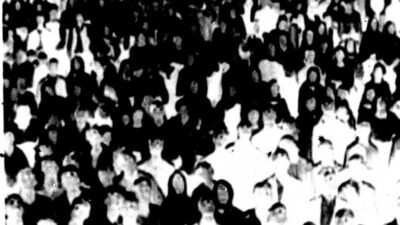

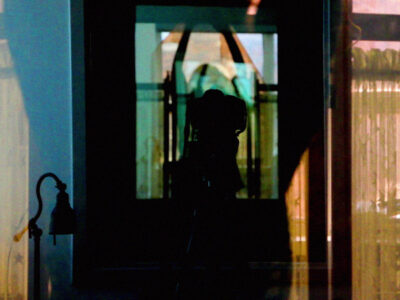


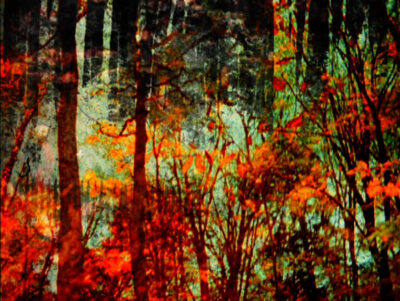
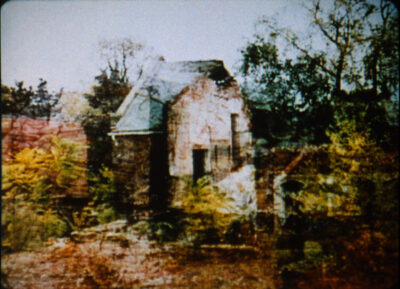
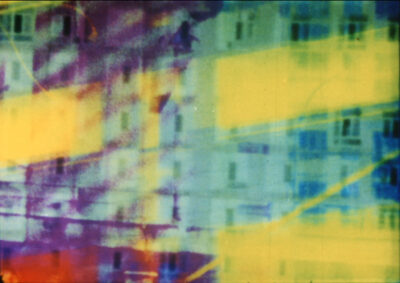
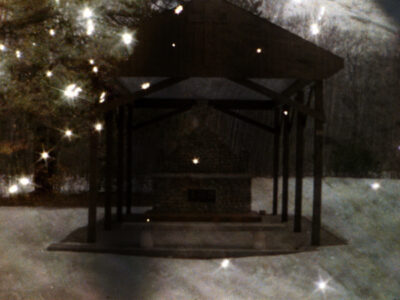
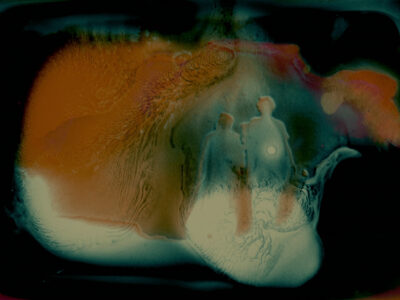
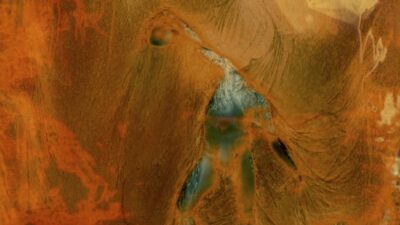

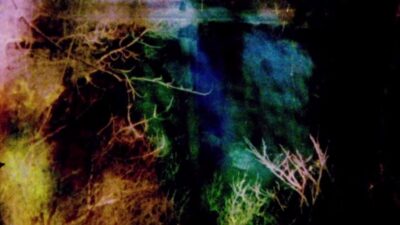

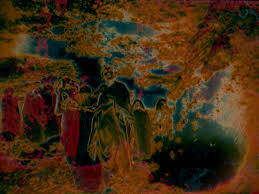
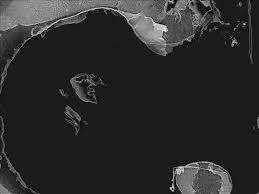
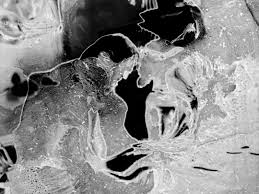
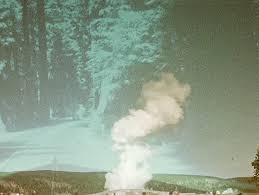
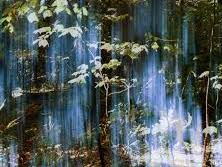
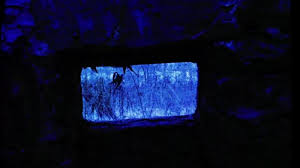
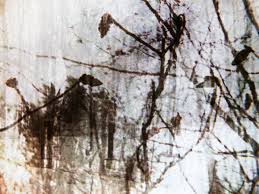
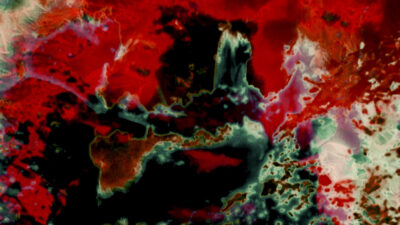
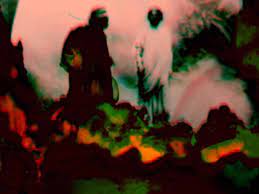
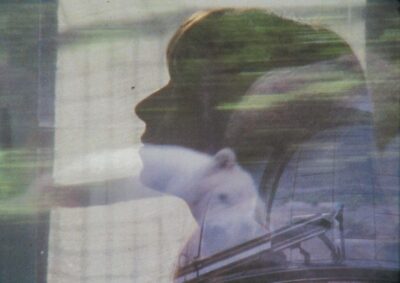

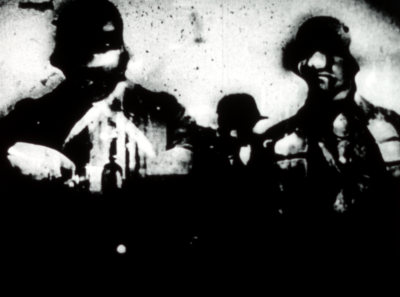
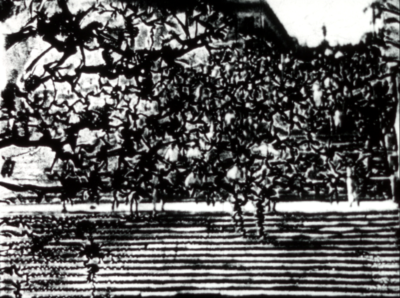
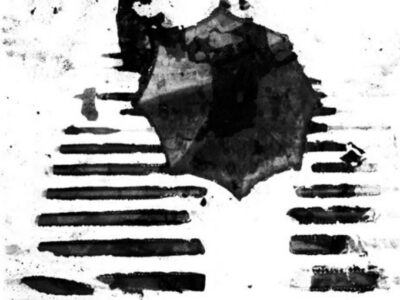
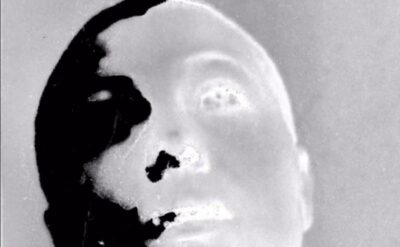
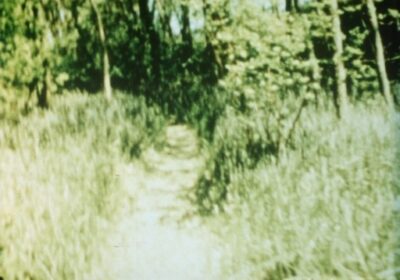
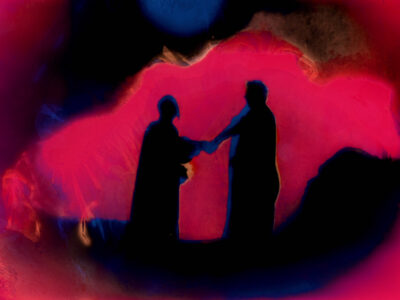
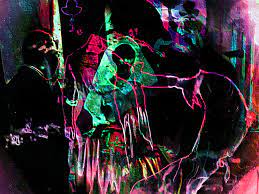
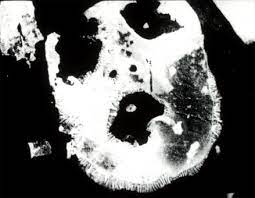
____
Further
Stephen Broomer Site
Stephen Broomer @ Twitter
Stephen Broomer @ Lightcone
Stephen Broomer @ The Film-Makers’ Cooperative
Stephen Broomer @ MUBI
Book: ‘THE TRANSFORMABLE MOMENT: THE FILMS OF STEPHEN BROOMER’
INTERVIEW: STEPHEN BROOMER
Collaborating on a Mystery: an interview with Stephen Broomer by Mike Hoolboom
Stephen Broomer @ Letterboxd
Stephen Broomer, Spirit in Landscape
SITDOWN: STEPHEN BROOMER
Rituals in Transfigured Space: Interview with Stephen Broomer
Stephen Broomer on Pepper’s Ghost
The Carriage Set Upright: Stephen Broomer on Potamkin
____
Extras
Carousel Study (2016)
Final Destinations: The Case of Night Train to Terror: Stephen Broomer, February 25, 2021
ATTRACTION AND THE “CINEMA OF THE SECOND GAZE” IN STEPHEN BROOMER’S TONDAL’S VISION
Gulls at gibraltar
______
Interview
from Incite!

Clint Enns: How did you begin making experimental cinema?
Stephen Broomer: I read my father’s copy of Sheldon Renan’s Introduction to the American Underground Film when I was 14. At the time, I didn’t have access to most of those films. The first thing I did when I began studying at York University was watch their print of Wavelength (1967). I got a Super 8 camera to do a class assignment – we were supposed to film an environment, something general like that – and I shot a film that later became Manor Road (2010). It was very different in its original form – it was just a series of long shots of trains going under a bridge at Manor Road and Yonge Street, from late afternoon to night, spaced out with time lapse between each train. I made some other films that summer, and I started using those films as the basis for new work when I resumed making films eight years later, in 2010. I came back to experimental film around 2006, when I started doing a Master’s degree in film history and working in film preservation. I had a lot of false starts, but my work as a filmmaker really began in 2010, when I finished Manor Road in its present form. I’m still developing work from old reels of Super 8.
CE: There seems to be aesthetic similarities between your work and some of the other members of the Loop Collective, in particular Dan Browne and Izabella Pruska-Oldenhof. I am thinking about your use of colour and superimposition, your interest in materiality, and your embrace of hybrid forms.
SB: Well, we see each other’s films, and we often screen together, so I’m sure their work has influenced me. Over time, I am beginning to see more differences emerge in our work, but we’re all starting from a common history. I would not be making such films today if not for Izabella’s encouragement.
CE: Can you talk about your interest in religion as a subject matter for your films? Should the abandoned and decaying sacred spaces in Christ Church – Saint James be read as allegory?
SB: I’m interested in Christianity, for its iconography, its rituals, its spaces, its legends, their manifestations in art and literature, but I’m also just interested in ritual and legend across history and faith. I also find that I’m often working with perception and form in the way that faith rituals act on perception: you might see certain qualities of repetition and call-and-response in some of my films, or durational qualities that recall the experience of a mass. A mass demands a kind of collective focus that would invite comparisons to the movie theatre. There are motifs in all three of these films to echo those structures of hymn and mass and prayer. As for allegory, with this work I’m recording these ruins – I make no claims of them as a stand-in for anything greater than what they are.
CE: Is it just me or do you actually make the sign of the cross with your camera in Brébeuf ?
SB: Who would do a thing like that?
CE: I’m not accusing you of sacrilege. Many of your films contain documentation of repeated performed gestures. Watching you shoot this summer, I witnessed you repeat an incredibly violent and exhausting gesture, which consisted of lifting a Bolex camera above your head and throwing it towards the ground while recording at 12 frames per second.
SB: Oh yeah, those gestures are running through my work, from Balinese Rebar (2011) on. I do this in part to create abstraction – I mean, they recall action painting – but I’ve also been working to control it, to have a pretty clear idea of what that gesture captures, what it does to the subject, beyond what it means to perform it. I’ve been working with a lot of variables – frame rates, focal lengths – to create different textures.
CE: Another recurring theme in your work is the transformation of urban eyesores into colorful, densely layered objects of beauty. In particular, in The Order of Ideas at the Leslie Street Spit (2012), Balinese Rebar and Queen’s Quay (2012). The Leslie Street Spit is the ideal image of a post-apocalyptic world full of construction detritus. In fact, the city sign warns visitors that “persons entering these premises do so at their own risk.” Similarly, in Queen’s Quay you document the condominiums that pollute Toronto’s Harbourfront neighbourhood.
SB: I see what you’re saying about the Leslie Spit. There are beautiful wildflowers and dense woods and clear beaches that run all along it, as well as buried cement blocks and a lot of consumer debris and rusted-out sheet metal. Balinese Rebar was shot in an industrial corridor in East York, which is where those garages and factories are, or were, and the images of Yonge Street, the spinning motif, that was shot at a bridge that overlooks Yonge Street at Davisville. The materials that make up Balinese Rebar and Queen’s Quay were shot in 2002. The title Balinese Rabar also references the music in that the film. The film is accompanied by gamelan music, although it is actually performed by musicians of Java, not of Bali.
CE: Would it be safe to assume that you take more inspiration from 1960s-era filmmakers than from contemporary ones? Where do you see your work fitting into the current experimental film milieu?
SB: Some of my favorite filmmakers were active in the 60s, but my work comes from the present moment. I don’t think it’s my role to make pronouncements as to where precisely my work fits in the contemporary experimental film milieu. Perhaps somewhere between Stan Brakhage and Carl Brown, based purely on lexicographic ordering. Where do you see your work as fitting into the current experimental film milieu?
CE: I’m pretty sure people see me as a temporary con-artist. Speaking of trickery, your newest film, Pepper’s Ghost is one of the most complex de/re-mystifications of cinema I have ever seen. It’s as if the more that is revealed to the audience, the more mystified it becomes! How was it made?
SB: Pepper’s Ghost began with this interesting space – it’s my office and an adjoining office, which are former psychological observation rooms, so there’s a two-way mirror between them. I realized that I could create simple optical illusions by playing with ceiling lights, gel filters, curtains, and that became a perfect real-world analogue for the illusions that I was creating in my films through computer manipulation. I enlisted my friends Cameron Moneo and Eva Kolcze to join me in shaping the illusion. It’s my first substantial piece made in video, using a DSLR, and I decided it would just be stationary, and that our role in the piece would be to assist the camera in achieving these illusions by performing around it. Our actions would often transform the image in unpredictable ways.
CE: Although you often work across media, why is finishing on film important for you?
SB: For some pieces, finishing on film is important for the work itself. I still have a lot of faith in the darkened theatre, the flicker of the projected image, but that aside, new qualities emerge from out of these pieces when they’re rephotographed. Some would talk about generation losses in the act of rephotography, but you also gain something. As for why it is important to me, I see it as a final act of “finishing” a work. The negative and the optical soundtrack are made, and that is my gesture of commitment to the work as it is. I know then – no more revisions!
______________
16 of Stephen Broomer’s 37 films
______________
Fat Chance (2021)
‘On the life, death, faces and ages of Laird Cregar, Hollywood heavy, first famous for playing Oscar Wilde on stage, dead at age 31 as a result of a crash diet undertaken to transform him into a matinee idol. The film’s title, Fat Chance, was offered by Cregar as a witty rejoinder to a journalist who asked what the title of his memoirs could be called. His most memorable roles – lovesick murderers, snobs, arrogant criminals, and Jack the Ripper – are surveyed in this film, and followed by an expansion of his final sequence on screen, in Hangover Square, where, as George Harvey Bone, he plays his piano concerto even as a blaze engulfs the theatre.’ — SB
Trailer
_____________
Lulu Faustine (2020)
‘A miracle happened: summer came ahead of time. To be in love with an image was worse than being in love with a ghost. (I feel as if my tympanum were breaking.) Almost everything, in fact, does have an explanation. (Atmospheric pressure is increasing…). The remaining chapters will hold no surprises. (…and I feel as if my tympanum were breaking.) To be on an island inhabited by artificial ghosts was the most unbearable of nightmares. (12.30 o’clock, respiration is extraordinarily difficult.) I have given you a pleasant eternity! Just me for you and you for me alone. (I am intoxicated with gasoline.) It will be an act of piety.’ — SB
Trailer
______________
Phantom Ride (2019)
‘A trip to the great beyond. From a War Bonds rally to a Florida resort beauty pageant, via Monument Valley, the Blue Star Memorial Highway, the Rocky Mountains, as above, so below, a twenty-year drive with a punchline in the heart of it. This land is your land, this land is my land, or, don’t you wanna go to heaven when the world’s on fire?’ — SB
Trailer
______________
Resurrection of the Body (2019)
‘In memoriam. Man in pieces. You have the lovers, remade by funhouse mirrors; you have the symmetries, undone, bent and curved; and you have the model, the bag on her head filling with carbon dioxide. Who owns your life? Testimonial and demonstration, a most ominous trade show. An experiment in therapeutic cinema. A speculative sequel and conclusion to John Hofsess’s Palace of Pleasure (1967).’ — SB
Trailer
the entirety
______________
Tondal’s Vision (2018)
‘A fable and immram, sifted from the cloak and rubble of the Comedy, a vision before Dante. The soul of the knight Tondal, stricken by the excesses of his flesh, quits his body to tour the next world. He is guided by an angel through heaven, hell and limbo. What lessons await him here? To every pleasure there is a cost, for poetry is a kind of poison, and even your angels will get you lost. Angel, tell me, for how long was I dead?’ — SB
Trailer
______________
Potamkin (2017)
‘In 1933, at age 33, Harry Alan Potamkin died of complications related to starvation, at a time when he was one of the world’s most respected film critics. In his writings, he advocated for a cinema that would simultaneously embrace the fractures and polyphony of modern life and the equitable social vision of left radical politics. This film-biography is assembled out of distorted fragments of films on which he had written, an impression of erupting consciousness.’ — The film-makers Coop
Trailer
____________
The Bow and the Cloud (2016)
‘A waterfall cuts through the land along the Bruce Trail; birdsongs and a distant cloud; I stand in the shadow of an electric cross; a bow set in the cloud, a token of the covenant between god and man. Made at the Devil’s Punchbowl conservation area, Hamilton, Ontario, March 2016.’ — SB
Trailer
______________
Wild Currents (2015)
‘A tragic mistake jolts Teddy and Joanne into limbo. Their spirits bear witness to their past usage of household appliances, as if by electric charge they might uncoil their spectral presences from home and garden. A myth and a ghost story for Christine Lucy Latimer, on her birthday, 2015.’ — SB
the entirety
______________
Variations on a Theme by Michael Snow (2015)
‘Just / faintly / a corner / was / seen there / trying / to look / like an edge.’ — SB
the entirety
______________
Hang Twelve (2014)
‘Encores live yet
Slice every note, each notice sincere in secret
Lovers covet eyeliner to recite in vein or vesicle
Clever noise, silence or else’ — SB
the entirety
______________
Jenny Haniver (2014)
‘A photographer steadies a Polaroid camera and composes a shot of the sky, flanked by tree branches. Later, a woman wakes from a nightmare. Jenny Haniver takes its title from a cryptid totem sold for centuries at the docks of Antwerp: a Jenny Haniver or jeune d’anvers (young girl of Antwerp) is a disfigured ray or skate carcass, carved to resemble an angel, a devil, a dragon. A series of ten filmed portraits are subject to all manner of alteration. By this they compose the hull of a ship wrecked on rocks sung by sirens. To mirror its namesake, the film’s plastic properties have been carved, lacerated, bleached, otherwise stressed, reshaped to transform reality into the fantastic and unknowable.’ — SB
the entirety
______________
Pepper’s Ghost (2013)
‘How we may see in a Chamber things that are not! Here, mutations of light, through fabric, glass, and colored gel, make bodies and objects transparent. Let there be a chamber wherein no other light comes but by the door or window. Let pictures be set over against this window. For what is without will seem to be within, and what is behind the spectator’s back, he will think to be in the middle of the room, as far from the glass inward as they stand from it outwardly. Clearly and certainly, he will think he sees nothing but truth.’ — SB
Trailer
the entirety
______________
Spirits in Season (2013)
‘Lily Dale is a spiritualist community in Chautauqua County, New York. Pilgrims and tourists swarm the hamlet in summer, but in the fall, Lily Dale becomes a more intimate setting for spectral communions. This film explores the town’s Leolyn Woods, pet cemetery, Inspiration Stump, and Fairy Trail. Music by Nate Wooley.’ — SB
the entirety
______________
Championship (2013)
‘At a wrestling tournament, a young competitor faces match upon match. Referees converge on the scene. The crowd’s attention wanes and focuses with the intensity of the bout. Sounds drift in: a psychic piano enters over fast and short breaths. This is a contest of past and future. It will be decided in the ring.’ — SB
the entirety
______________
The Shapes Book (2013)
‘Shapes in a dollhouse betray the fatal competition of earthly things.’ — SB
the entirety
____________
Brébeuf (2012)
‘Brébeuf is a study of St. Ignace II, in Huronia, where the ethnographers and Jesuit missionaries, later saints, Jean de Brébeuf and Gabriel Lalemant, were killed in 1649. The images in this film arise from a reading of that story – the joining of the sumac and the cross, the blessing gestures, struggles in the field, elliptical scans of stones, and the shimmering of water to summon a glimpse of the flesh boiled from the skin, in fables of the killing. Brébeuf draws from the dark and storied history of early Western conquest, rediscovering in the harsh, wild landscape of the North resonances of the violent conflicts between the Jesuits, the Huron, and the Iroquois.’ — SB
the entirety
*
p.s. Hey. ** Dominik, Hi!!! I can always use my laser-honed ability to find haunted attractions if you need me to try to scour Budapest virtually. Online scarefests can work too though. Ha, wise love, yours, yesterday’s. Love turning the pouring rain I have to trudge through for half an hour in a few minutes into very flashy looking (biodegradable) confetti (and your pouring rain too if you have any), G. ** TomK, Hi, Tom! Ah, I so love when the blog is accidentally personally timely. Cool. The virtual haunted house is, at the moment, a thing that would need to be presented to people rather than played by them. But we might do a playable version if it turns out as well as we hope. If thats case, it might either go online or be presented as a kind of interactive installation. I’m doing two online readings/launch things for ‘I Wished’ on the 8th and the 11th. I think that’ll be it, or so far anyway. ** _Black_Acrylic, Hey, Ben. There must a fair number of horror movies with parasite monsters, no? I mean in addition to the basic ones in the post. ** T, Hi. All thanks and power to Jose. Mm, the only porns I’ve seen that I can remember which attempted to mix porn and horror were lacking in both departments. But it does seem like a hybrid ripe for something scalding hot-meets-fear mongering. I’m waiting to see ‘Titane’ with English subtitles because I hear it’s talky, but it just opened in the States so I suspect there’ll be a bootleg out there to watch any day now. Very curious about it. The Home Haunt thing is one night only, at least at this point. On the 27th at The Pinault Collection. It hasn’t been announced yet, but it’ll be free. You’ll just have to RSVP. I’ll let you know as soon as it’s ready for RSVPing. Cool if you could come. I’m glad to hear your first teaching day brought you cool kids. I’m guessing that’s what makes or breaks such a set up. Well, your wished for week is a lot to live up to, but, gosh darn it, I’ll give it old college try. I guess I’ll wish you a week full of rapt students with eyes like does’ and feedback like a Metal band’s amps. xo. ** Bill, One would think, re: Evenson. Glad you’re up and about. That new Evenson book its winging its way to me since the bookstores here are unforthcoming. ** Grunge, Hi, G. I’ve never seen the much lauded, giantly successful ‘Parasite’ for no good reason. I’ll make a note to fill in that blank. I hope you have a swell day that at least partly involves you typing fiction into a computer with a scrunched forehead. ** Right. I’m figuring that most of you probably don’t know the work of the super interesting young Canadian experimental filmmaker Stephen Broomer, so I thought I would give you the opportunity to eliminate that lack. See you tomorrow.
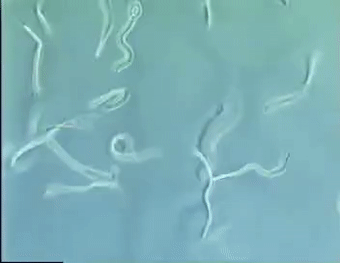





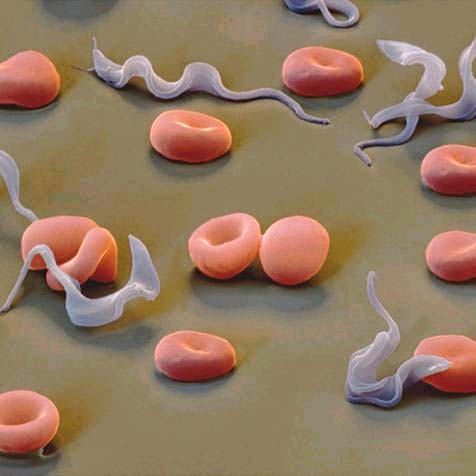

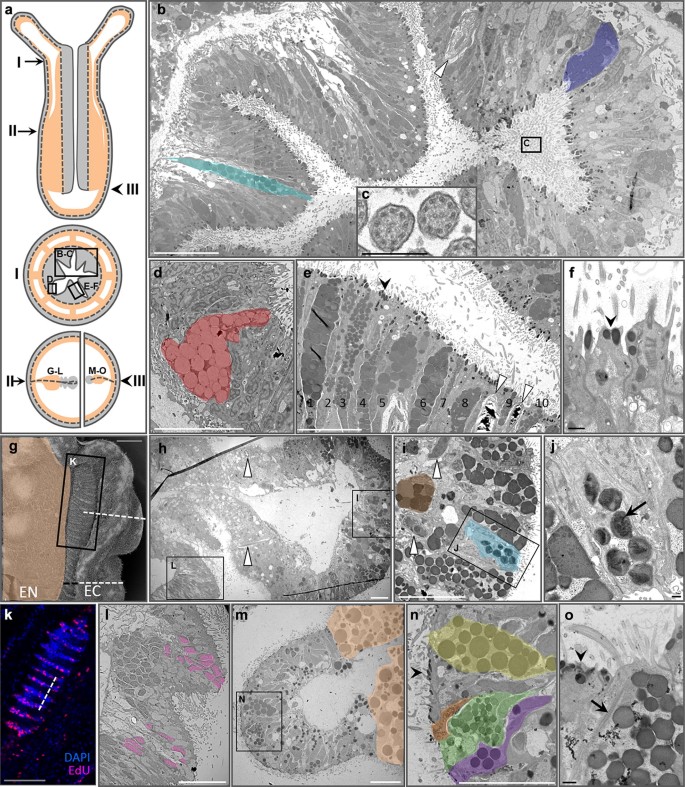


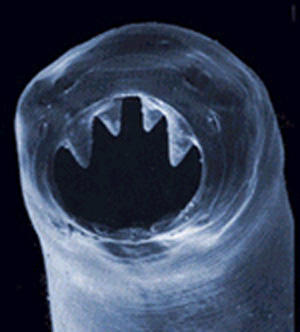

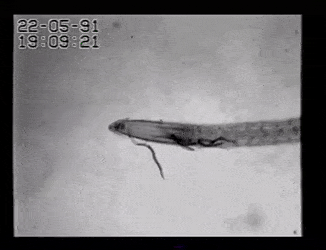




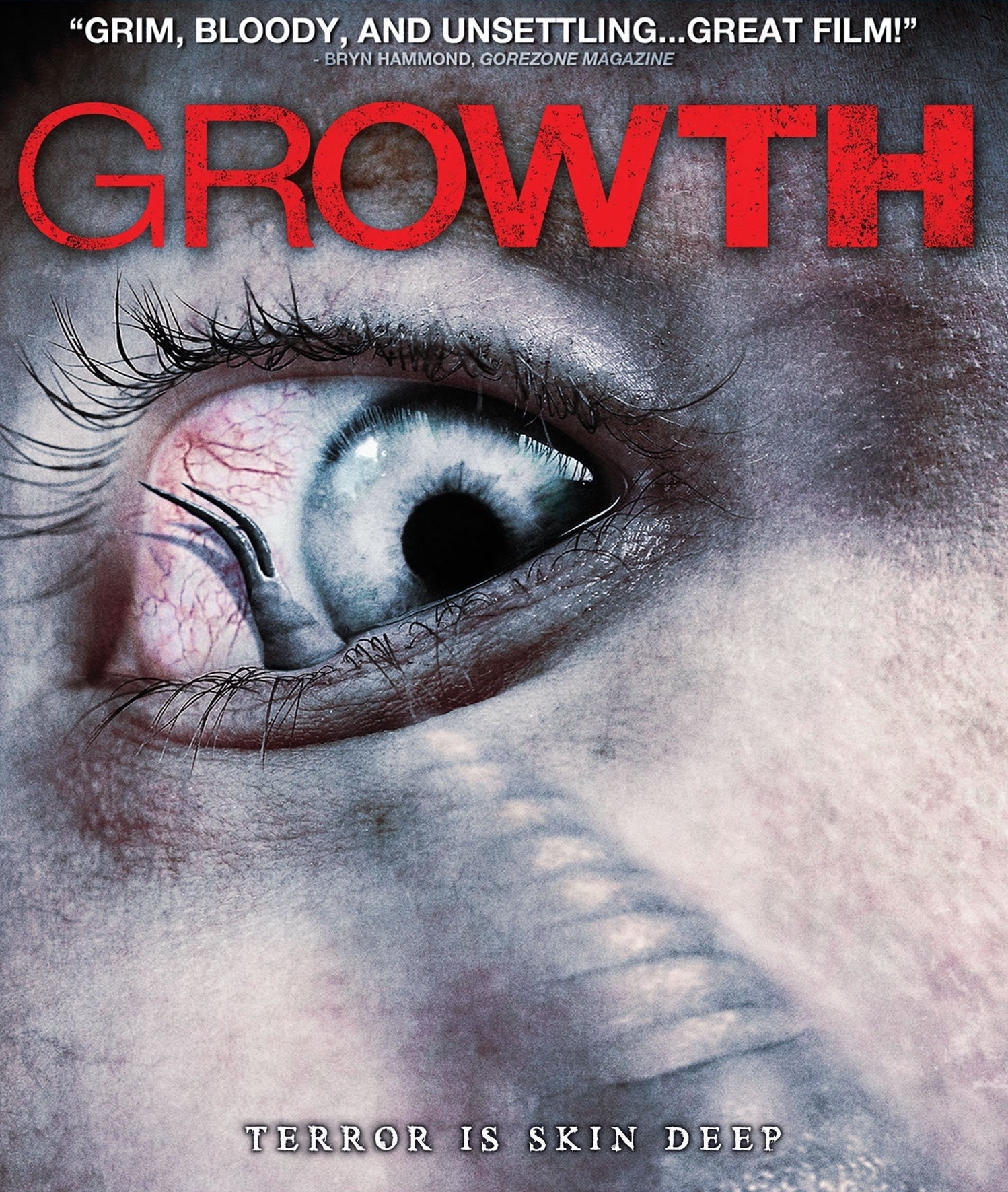
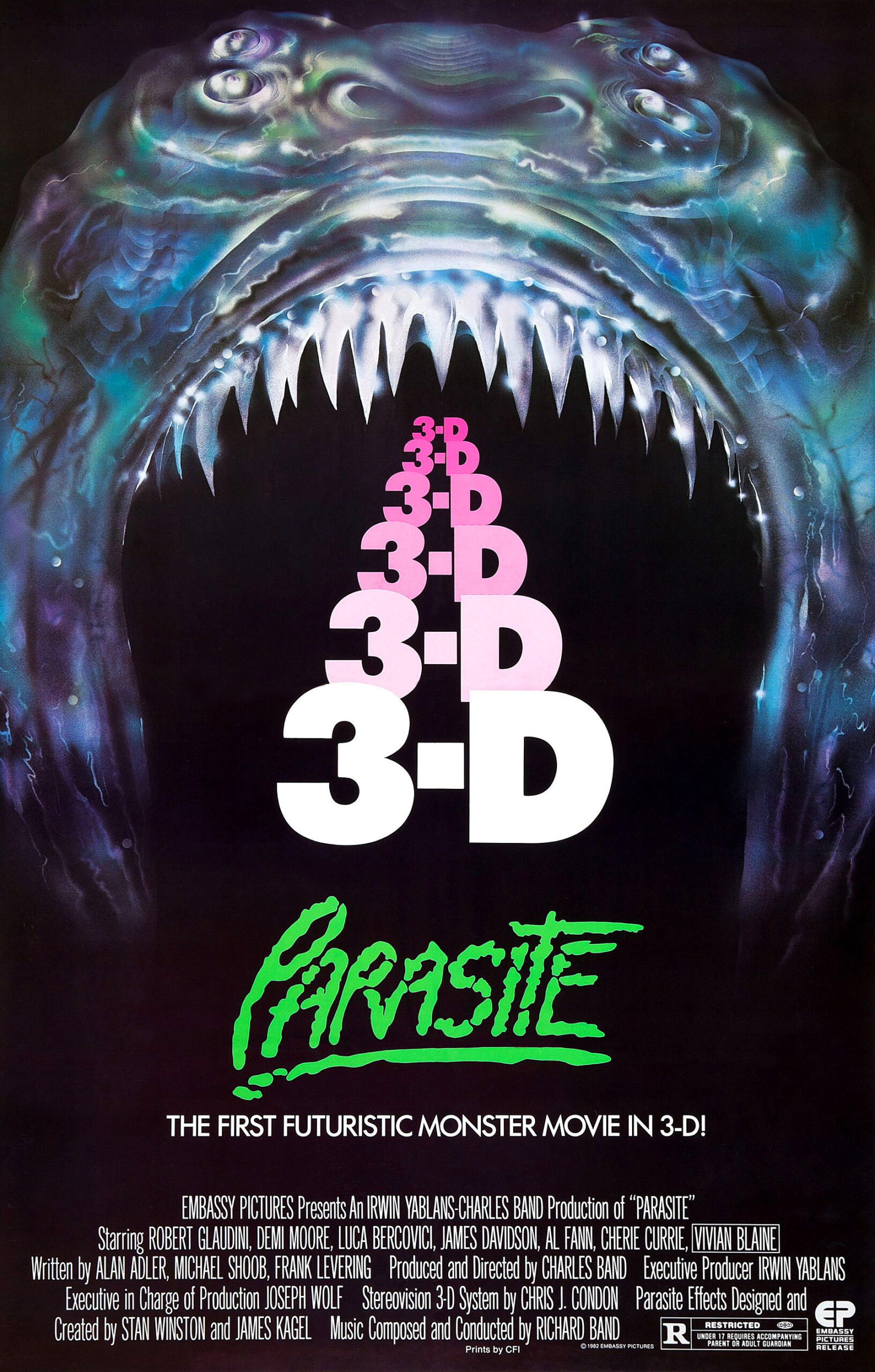


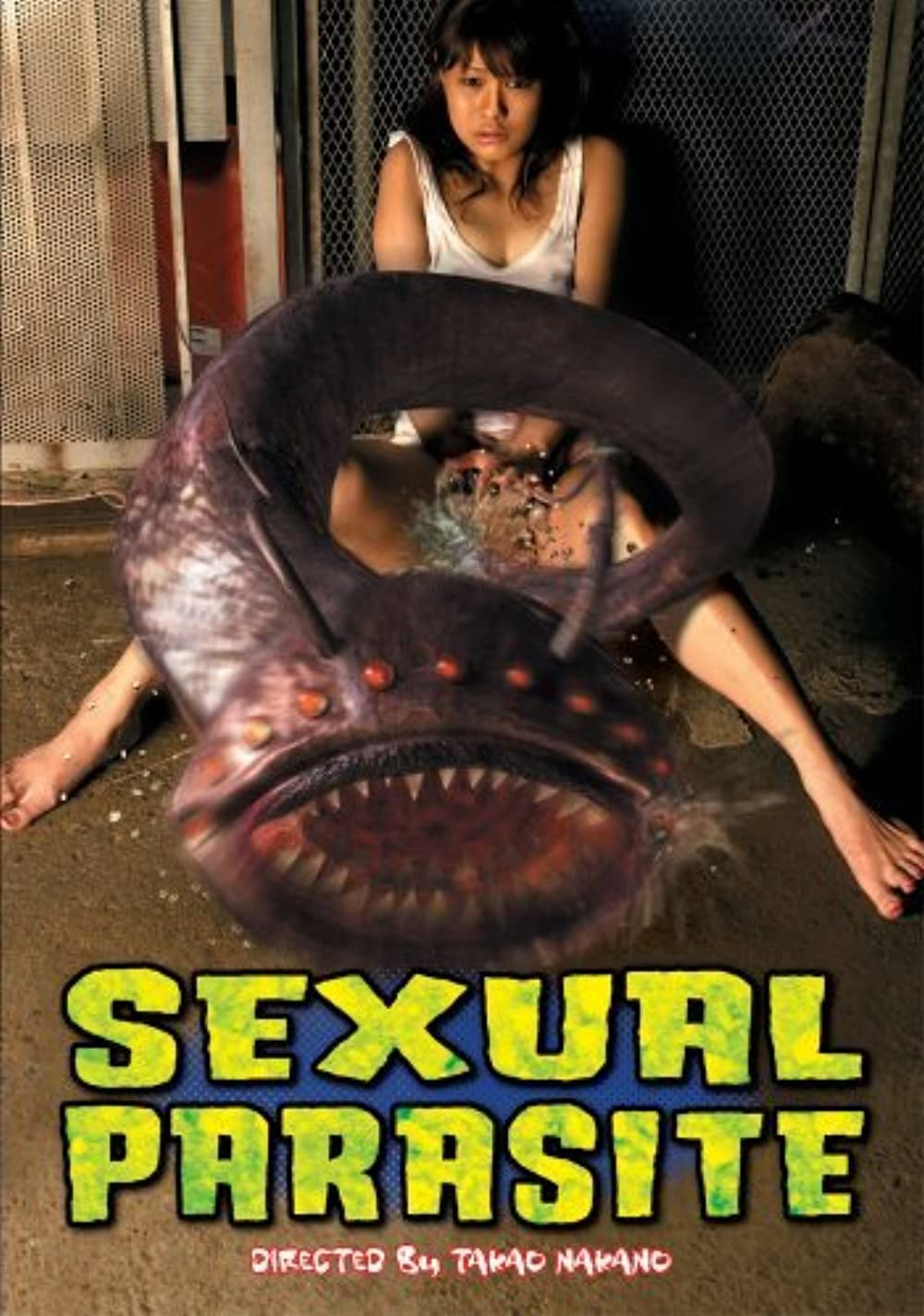

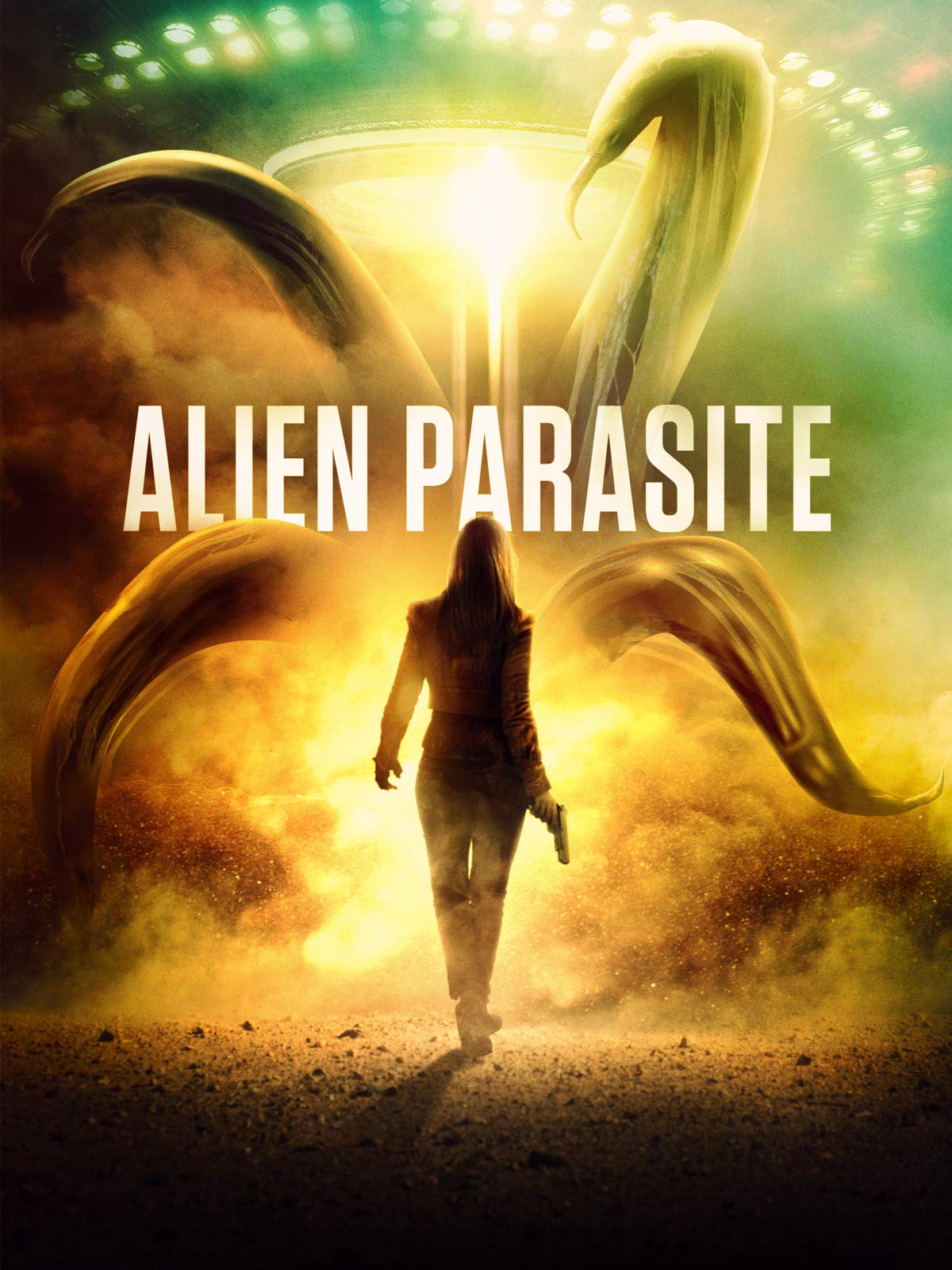





 Now available in North America
Now available in North America 